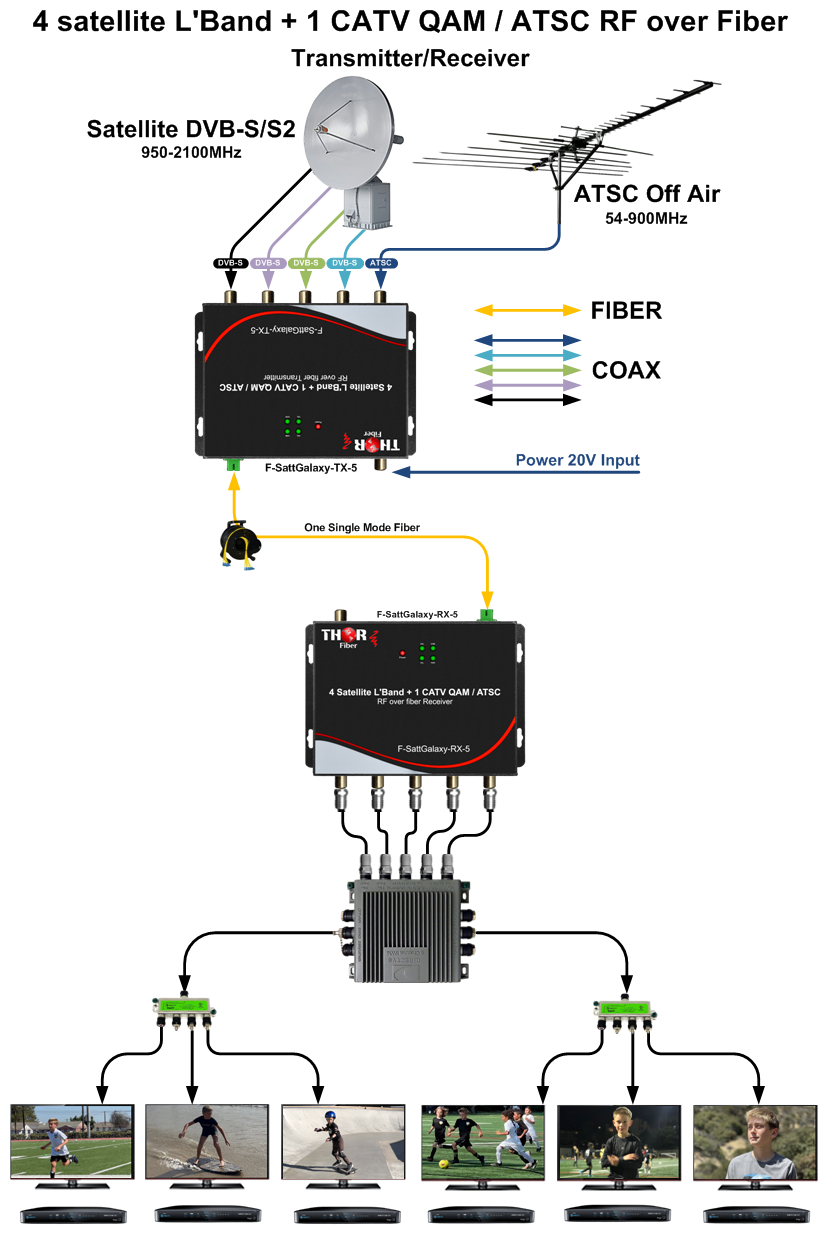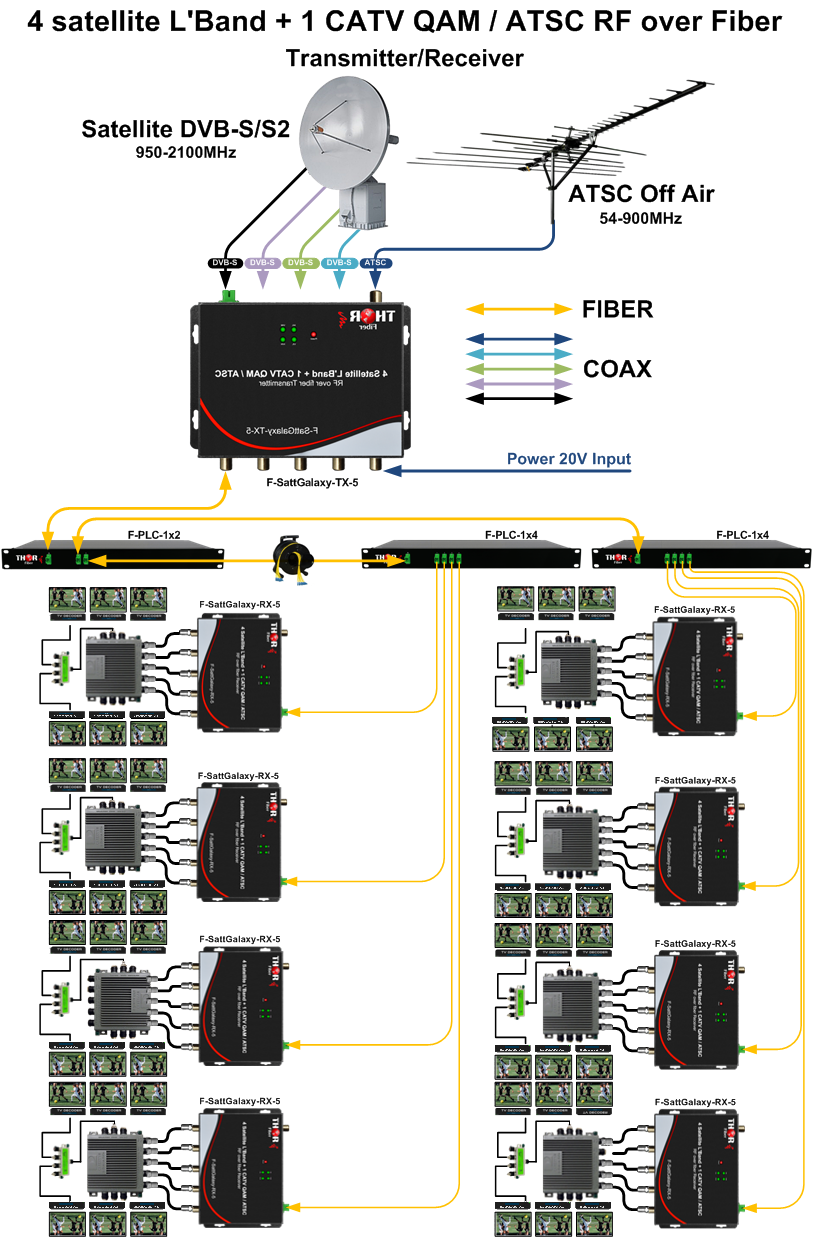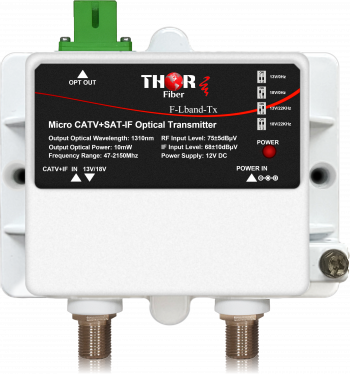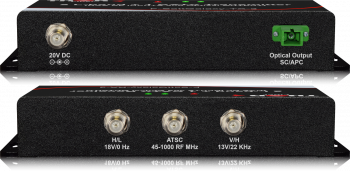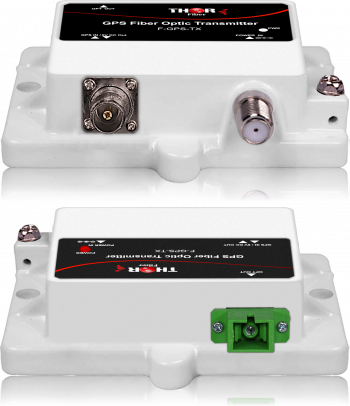The answer is yes, we can support both services,
This is gate article describing differences between Dish network and direct Tv technology
" There has been a lot of recent discussion about a merger between DISH and DIRECTV. This comes mostly from financial analysts who have no idea how the two companies’ technologies work. It must be pretty comforting to look at DIRECTV and DISH and think they’re the same, but they’re as different as two companies can be
Obviously, the receivers are different.
It’s clear that the receivers are different. They tune different frequencies, they use different guide systems, they even use different copy protection. Some of those changes could be made in software, but most would need to be made in hardware. So, combining the two systems would be very expensive. Since people usually hold onto receivers for a long time, that’s a big cost that otherwise wouldn’t need to be addressed.
Really, though, it’s the distribution.
DIRECTV uses a system called SWM (single wire multiswitch) while DISH’s latest systems use hybrid technology. On the face they’re similar — they both let you use splitters to send a single wire to each receiver that has all the data the receiver needs. The similarity ends there, though.
DIRECTV SWM

DIRECTV’s SWM system could be thought of as a mini-headend of sorts. While it’s not exactly like a traditional headend, there is some similarity. Up to 13 different “channels” can be run over a single wire and each receiver tunes to a specific channel. When you change from (for example) CNN to TBS, the content that’s on that channel changes because the SWM retrieves just what’s needed and sends it down the line.
The most common system actually has SWM technology built into the dish so there is but a single wire that travels into the house.
This system was put in place to allow for a relatively limited number of receivers to access a massive amount of content. With the current SWM system, the receivers get signals from over a dozen satellites on three completely different sets of frequencies. There are, as you can see, six different cables that come down from the dish. The right content is pulled from this massive stream and sent to each receiver.
Another trick of the SWM system is that signals within a specific range travel from port to port on the splitter so that programs can be shared. In the most common installation, the satellite line connects to a server (called a Genie DVR) and video is shared from that server to clients which have no connection to the satellite at all.
DISH Hybrid

The DISH Hybrid system shares a lot of the same ideas as the SWM system but does it all differently. It too allows a single line with splitters to feed different receivers. It also allows for communication through the splitters so that one device (called the Hopper DVR) can supply video to client boxes.
DIRECTV’s SWM system is more like a headend. DISH’s Hybrid system has more in common with a “stacker.” In a stacked system, the entire satellite signal is put on a single wire, in a large frequency range. At the receiver, the signal is “destacked” so that the receiver can pick up the signals that are needed.
The advantage of a stacked system is simple: the entire satellite signal really is on one wire. This allows for nearly infinite expansion. DISH’s own documents show 32 Wally receivers fed off one hybrid switch. Most likely the only limitation to the number of receivers is the signal strength itself.
In Hopper mode, the hybrid system supplies signal to the Hopper DVR over a single line and that same line also sends video to the clients through a special splitter called a “node.”
Which system is better?
The real question is, why aren’t they the same? DIRECTV did use stacked systems about 15 years ago but abandoned the practice. DIRECTV uses three distinct frequency ranges and stacking all 6 types of signals on a single wire was impractical. It would have taken very expensive cable to do.
DISH still only uses a single frequency range so stacking is easier. However they have two different fleets of satellites. DIRECTV has more capacity today than DISH but both companies have enough capacity to meet today’s needs. If 4K ever really takes off, DIRECTV can supply hundreds of 4K channels while DISH will not. However, that’s a problem for tomorrow.
In home installations, both systems are really great. In industrial installations, it’s equally easy to scale both systems up to thousands of receivers. However, it would be impossible for both systems to exist on a single line, and if DIRECTV and DISH ever did merge, one system or the other would have to be completely replaced.
And that, I believe, is why DIRECTV and DISH will not merge in the short term. Any plan to merge would go very slowly and carefully, over a period of many years. "

 ES
ES










